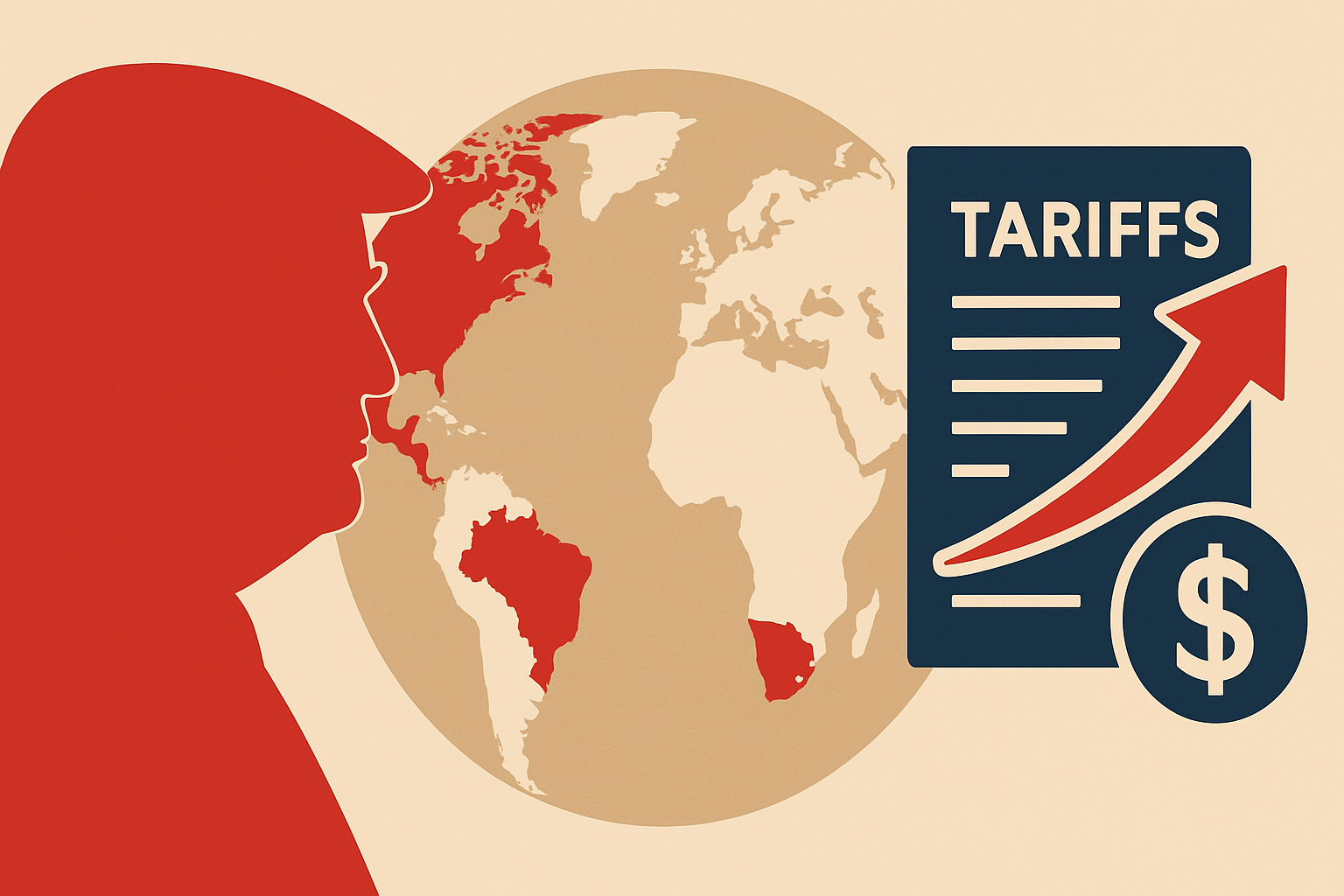Former President Donald Trump’s latest round of tariffs—presented as efforts to correct global trade imbalances—have increasingly taken on a distinctly political character. While the administration justifies these measures under the guise of national security or unfair trade practices, many of the newly imposed tariffs reflect strategic and ideological grievances rather than economic reasoning.
Canada: A Surprising Target
Canada, one of the US’s closest allies, saw its headline tariff rate spike to 35%. While goods covered by the USMCA trade agreement remain largely protected, the broader message was pointed. The Trump administration cited a supposed failure by Canada to curb fentanyl trafficking—despite no concrete evidence of such a crisis—and retaliated against Canada’s plans to recognize a Palestinian state. Trump bluntly stated this diplomatic move made it “very hard” to finalize a trade agreement with Ottawa.
India and the Brics Bloc
India, too, faced new 25% tariffs, despite previously expressing optimism about reaching a trade accord with Washington. Trump cited India’s ongoing defense deals and oil trade with Russia as justification. However, India’s membership in the Brics alliance—an emerging bloc seen by Trump as “anti-American”—appeared to be the real irritant. During a recent Brics summit, the US president warned of an additional 10% tariff on countries aligning with the group’s policies.
South Africa: Brics Tensions Escalate
South Africa, another Brics member, was hit with 30% tariffs. Trump’s administration justified the measure by referencing a baseless conspiracy theory popular among the Maga base about a supposed “white genocide” in South Africa. The allegation, widely debunked, has further strained US-South Africa relations.
Brazil: The Hardest Hit
Brazil, the host of the latest Brics summit, received the harshest treatment: a 50% tariff rate plus additional sanctions. This occurred despite the US maintaining a trade surplus with Brazil. The Trump administration linked the punitive actions directly to the Brazilian Supreme Court’s prosecution of former President Jair Bolsonaro, Trump’s ally, who is facing charges for allegedly attempting to overturn Brazil’s 2022 election results—an echo of Trump’s own 2020 post-election controversies.
Without waiting for a verdict, Trump has condemned the proceedings as a “witch-hunt.” His administration went so far as to ban eight Brazilian justices from entering the US and slapped financial sanctions on Supreme Court Justice Alexandre de Moraes under the Global Magnitsky Act, typically reserved for human rights violators.
Adding fuel to the fire, the Trump administration has criticized Brazil’s progressive approach to regulating social media, particularly its efforts to combat hate speech and political incitement online. The president claimed this amounted to “tyrannical censorship” of US companies, despite global legal experts praising the court’s role in protecting democratic discourse.
Weaponizing Trade for Political Ends
The Brazil case exemplifies Trump’s broader approach—using trade as a lever for political retaliation. It also underscores the expansive interpretation of presidential powers to impose temporary tariffs. These powers were originally intended for use in emergencies: sudden import surges, national security threats, or proven unfair trade practices. Under Trump, however, they have become tools for targeting critics, rewarding allies, and reshaping global economic relations based on personal and political motives.
Unless checked by Congress or the courts, Trump’s tariff policy is likely to continue blurring the line between economic strategy and political vendetta, with long-term implications for global trade norms and US credibility.



